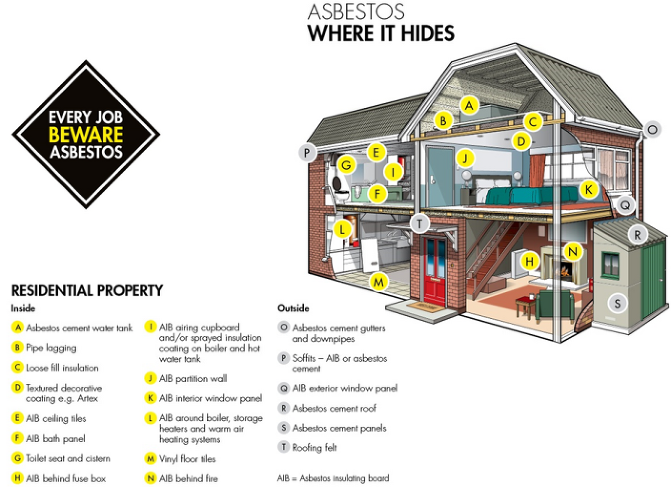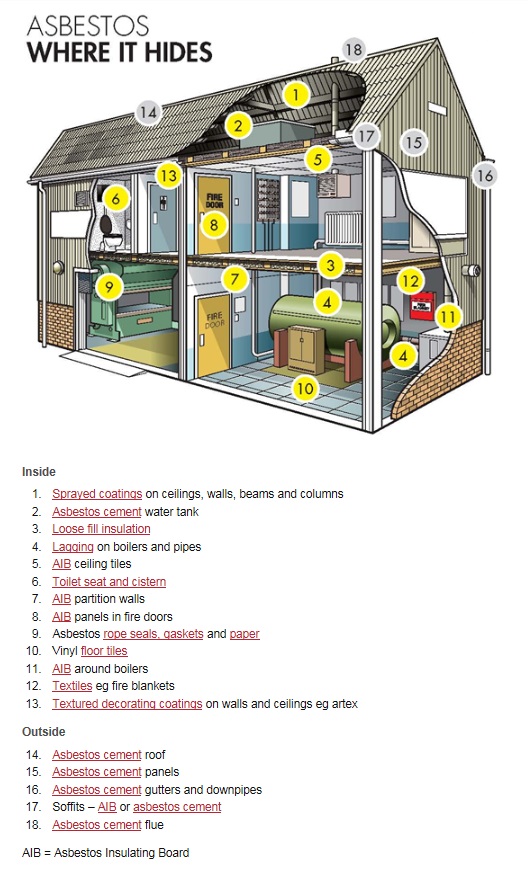At asgen, we are happy to help with any question or enquires that you have please call us on 01702 230457 or contact us via the contact us page, trust that you will receive professional and helpful services for all domestic, commercial and industrial enquires. Alternatively, You can check our frequently asked questions below for any queries on our asbestos removal services.
You can check our frequently asked questions below for any queries on our asbestos removal services.


Asbestos is the name given to a group of minerals that occur naturally in the environment as bundles of fibres and can be separated into thin, durable threads. These fibres are resistant to heat, fire, and chemicals and do not conduct electricity. For these reasons, asbestos has been widely used in many industries.
When asbestos fibres are inhaled they can cause serious diseases which are responsible for around 4500 deaths a year. There are four main diseases caused by asbestos: mesothelioma (which is always fatal), lung cancer (almost always fatal), asbestosis (not always fatal, but it can be very debilitating) and diffuse pleural thickening (not fatal).
Asbestos fibres are present in the environment in Great Britain, so people are exposed to very low levels of fibres. However, a key factor in the risk of developing an asbestos-related disease is the total number of fibres breathed in. Working on or near damaged asbestos-containing materials or breathing in high levels of asbestos fibres, which may be many hundreds of times that of environmental levels can increase your chances of getting an asbestos-related disease.
Asbestos related diseases won’t affect immediately but later on in life, so there is a need for you to protect yourself now to prevent you contracting an asbestos-related disease in the future. It is also important to remember that people who smoke and are also exposed to asbestos fibres are at a much greater risk of developing lung cancer.
Asbestos was extensively used as a building material in the UK from the 1950s through to the mid-1980s. It was used for a variety of purposes and was ideal for fireproofing and insulation. Any building built before 2000 (houses, factories, offices, schools, hospitals etc.) can contain asbestos. Asbestos materials in good condition are safe unless asbestos fibres become airborne, which happens when materials are damaged.
An asbestos survey is an effective way to help you manage asbestos in your premises by providing accurate information about the location, amount and type of any asbestos-containing materials (ACMs). It is recommended that you arrange a survey if you suspect there are ACMs in your premises or you are about to undertake any refurbishment and demolition work. Alternatively, you may choose to presume there is asbestos in your premises and would then need to take all appropriate precautions for any work that takes place. However, it is good practice to have an asbestos survey carried out so you can be absolutely sure whether asbestos is present or not.
The asbestos survey can help to provide enough information so that an asbestos register, a risk assessment and a management plan can then be prepared. The survey will usually involve sampling and analysis to determine the presence of asbestos, so asbestos surveys should only be carried out by competent surveyors who can clearly demonstrate they have the necessary skills, experience and qualifications.
An asbestos survey will identify:
The location of any asbestos-containing materials in the building
The type of asbestos they contain
The condition these materials are in
The removal of higher risk asbestos-containing materials (sprayed asbestos coatings, asbestos insulation, asbestos lagging and most work involving asbestos insulating board (AIB) should only be carried out by a licensed contractor.
Licensed asbestos removal work is a significantly hazardous job because it involves higher risk asbestos-containing materials (ACMs). These materials are more likely to release larger quantities of asbestos fibres when being removed than lower risk materials (such as asbestos cement). As a result, workers who are employed in removing higher risk ACMs require specific training and should follow specific working practices. Workers should also use sophisticated respiratory protective equipment (RPE) and are legally required to be under regular medical surveillance. It is because of the hazardous nature of this work that a licence to do it is required from HSE.
There are some asbestos removal tasks, involving lower risk asbestos-containing materials that do not require a licence. This is because any exposure to asbestos fibres from this type of work is not expected to present a significant risk, provided that the correct precautions are in place. If you do not have the skills yourself, you will need to use a competent contractor.
WhatsApp us